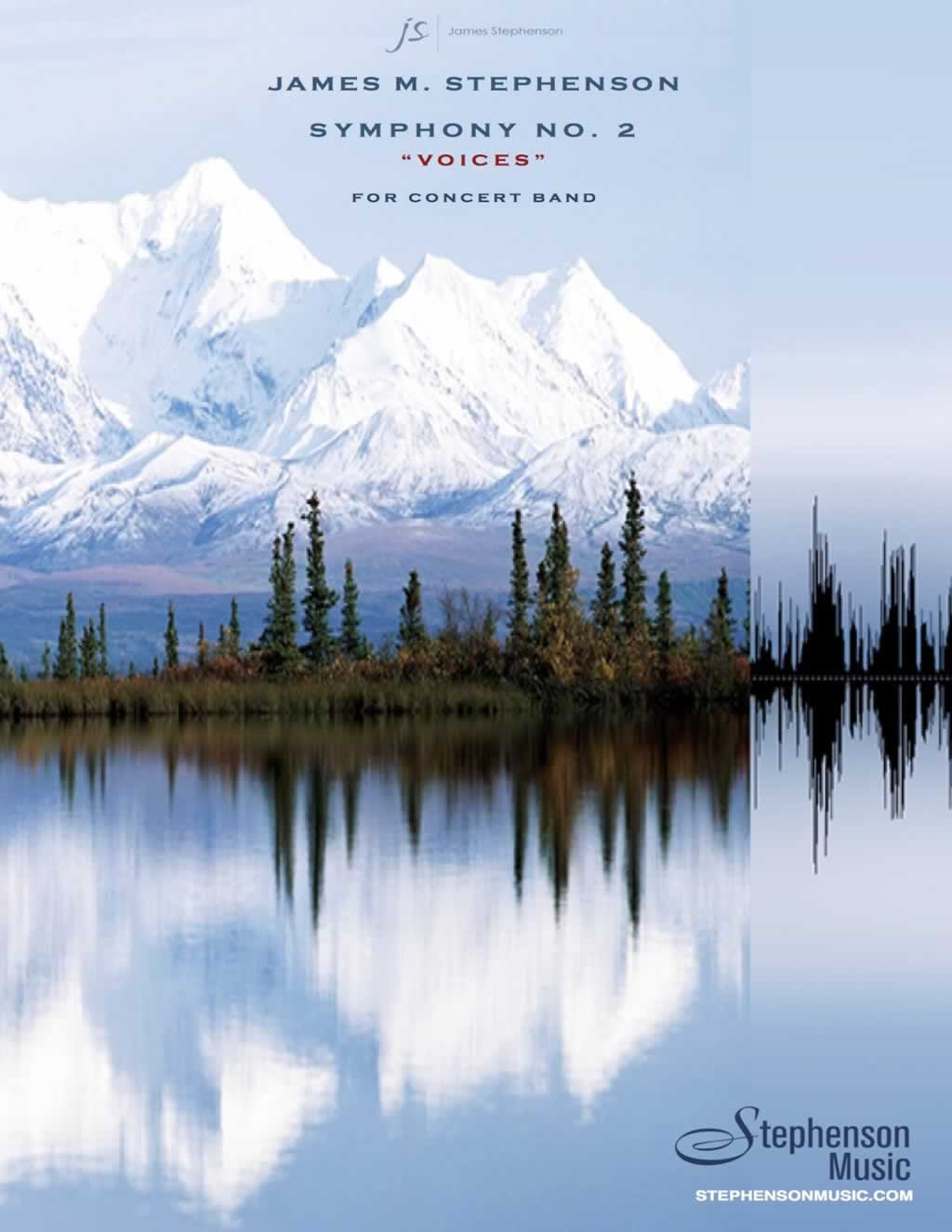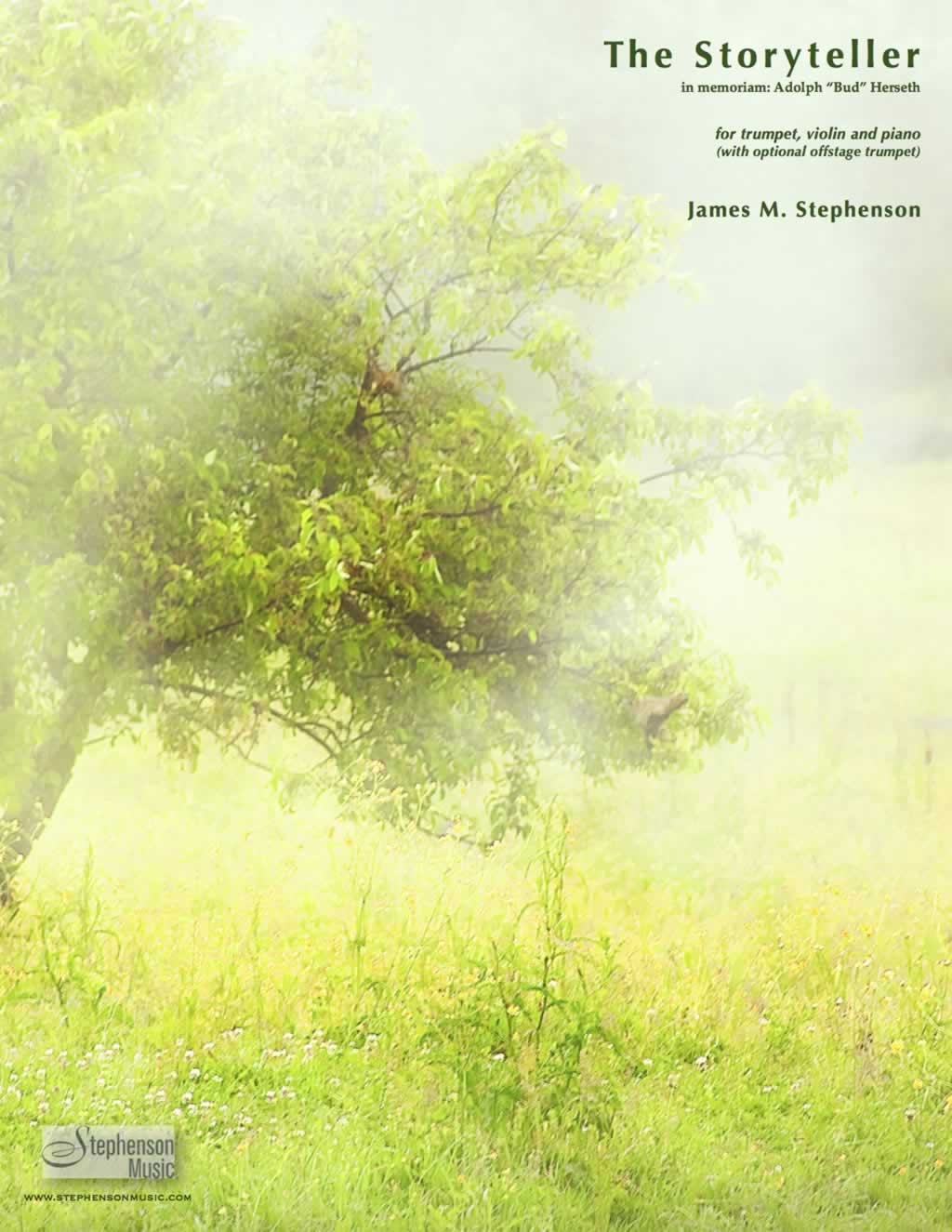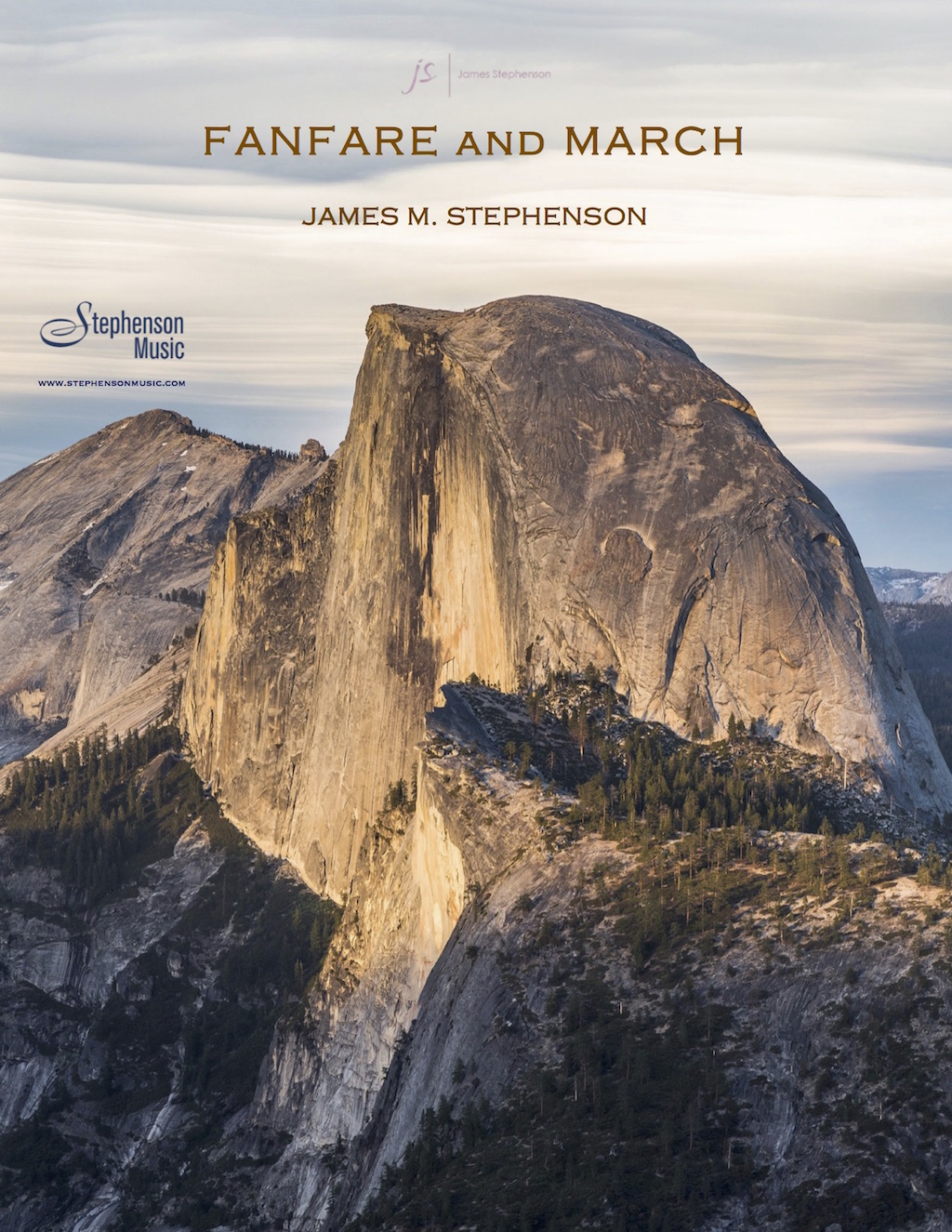Symphony No. 2 “Voices” for Wind Ensemble
$80.00 – $600.00
Winner of the 2018 Sousa/Ostwald Competition
(sponsored by the American Bandmasters Association)
Winner of the 2017 William D. Revelli Composition Contest
(sponsored by the National Band Association and KHS America)
20′
For wind ensemble.
Description
for symphonic winds
“VOICES”
I. PRELUDE: ‘of PASSION’ – 5 min
II. SHOUTS and MURMURS – 8 min
III. Voices of One – 7 min
James M. Stephenson
Program Notes:
(Editor’s note – from the composer himself):
For two years, the program notes further below (below the dashes) were what remained public. Recently, as I started feeling personally comfortable with it, I began sharing the original impetus for this symphony, which was):
On April 23, 2016, my mother, Shirley S. Stephenson, passed away, at the age of 74. It was the first time anyone that close to me had died, and I honestly didn’t know how to respond. As this new piece – the symphony – was the next major work on my plate, I thought the music would come pouring forth, as one would imagine in the movies, or in a novel.
However, the opposite happened, and I was stuck, not knowing how to cope, and not knowing what to write.
Eventually, after a month or so, I sat at the piano, and pounded a low Eb octave, followed by an anguished chord answer. I did this three times, with three new response-chords, essentially recreating how I felt. This became the opening of the symphony, with emphasis on the bass trombone, who gets the loudest low Eb.
I vowed I wouldn’t return to Eb (major) until the end of the piece, thus setting forth a compositional and emotional goal all at once: an Eb to Eb sustaining of long-term tension, technically speaking, and the final arrival at Eb major (letter I, 3rd movement) being a cathartic and powerful personal moment, when I finally would come to terms with the loss of my mother.
The voice in the piece is that of my mother, an untrained alto, which is why I ask for it without vibrato. In the end, she finally sings once last time, conveying to me that “all will be ok”.
I think it is the most difficult times we endure that force us, inspire us, to dig deeper than we could ever imagine. On the one hand, I am, of course, deeply saddened by the loss of my mother; but on the other, I will always have this piece – which is the most personal to me – to in essence keep her alive in my heart. I always tear up at letter I. Always. But they are tears of joy and treasured memories of 74 years with my mother.
(Jim Stephenson; October, 2018)
The original published program notes, were as follows below, because I was not in an emotional state where I was ready to talk about such personal matters, as shared above.
———
Recently, I was awaiting an international flight, when I heard the distinct sound of laughter coming from behind me. Because I could not see the people laughing, it occurred to me that it was a universal language of happiness; one which cannot evoke any judgment based on racial, religious, gender, social, or any other type of prejudice. I decided to not turn around, but rather to enjoy the laughter for what it was. It was this decidedly delightful sound of the human voice that inspired my 2nd symphony for wind ensemble.
Voices. They come in so many forms. Some high, some low. Extremely loud, or extremely soft. Some are menacing, or angelic. A voice is completely unique to each individual, and instantly recognizable to a close friend or relative. As a verb, it is used to express or vocalize an opinion. Used together, voices can express opposition, or unification. It occurred to me that all of these and more can be represented within the scope of a wind ensemble. The symphony No. 2 is an exploration of as many voices as I could formalize, resulting in a kind of concerto for wind ensemble. The culmination of the symphony is one of a unified voice, bringing together all of the different “cultures” and “individual voices” of the wind ensemble to express an amassed vision of hope and love; a vision I believe to be shared throughout all the world, yet disrupted continually by misguided and empowered individuals. I could think of no better messenger for such a work than the US “President’s Own” Marine Band – the commissioners of the work – who not only stand among the best musicians of the world, but also represent a country based on the principles of all-inclusiveness and celebrated diversity. It is because of this that no text is used for the mezzo-soprano voice used in this symphony. Instead, the singing voice is another instrument in the ensemble, joining in, or emerging from, the surrounding textures.
I would like to personally thank Lieutenant Colonel Jason K. Fettig for his invitation to compose such a significant work, and also the members of the band, many of whom I’m honored to call friends, for their remarkable musical gifts and dedication to our country.
~ Jim Stephenson; September, 2016
Instrumentation:
mezzo-soprano
piccolo – 3 flutes (+alto) – 2 oboes – english horn – E clarinet – 3 B clarinets – alto clarinet – bass clarinet
2 bassoons – contrabassoon – saxes: 1 soprano, alto, tenor, baritone
4 french horns – 3 cornets (+flugels) – 2 trumpets – 3 trombones – bass trombone – 2 euphoniums – tuba (2) double bass – piano/celesta – harp
timpani
(Optional “world parts” also included: Bass Saxophone,Euphonium 1 Bb, Euphonium 2 Bb,
Tuba Bb,Basset Horn)
6 percussion: 2 mallets + 4 percussion
Mallet 1: Marimba, Glockenspiel, Crotales, Xylophone, Chimes, Cymbals, Triangle Mallet 2: Xylophone, Cymbals, Vibraphone, Marimba, Glockenspiel
Perc 1: Snare Drum, Triangle, Tam-Tam, Sus. Cymbal (20″)
Perc 2: Triangle, Tam-Tam, Woodblock, Sus. Cymbal (13″), Tambourine, Slap-stick Perc 3: Sus. Cymbal (17″), Triangle, Tambourine, Chimes
Perc 4: Bass Drum, Djembe, Sus. Cymbal (20″)
Additional information
| Duration | |
|---|---|
| Type of Purchase | |
| Type of Work | |
| Band Category | 6 |





